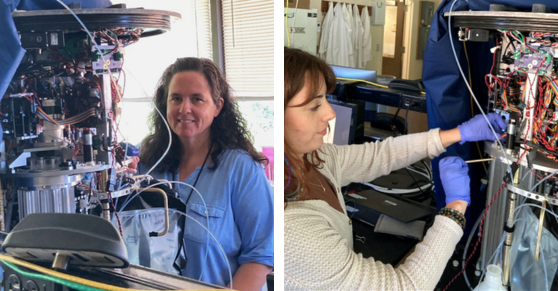
Recent reports from the Washington State Department of Fish and Wildlife indicate that harmful algal bloom (HAB) activity is picking up along the outer WA coast, with a plankton species known as Pseudo-nitzschia (PN) and its associated toxin, domoic acid (DA), being detected at elevated levels across several water quality monitoring sites. As a result, NCCOS Hollings Marine Laboratory scientists from Charleston, SC have traveled to the Northwest Fisheries Science Center (NWFSC) in Seattle to work with NWFSC scientists to calibrate a DA toxin sensor prior to its deployment on an Environmental Sample Processor (ESP; aka ‘ESPeddie’), a robotic self-contained device. The scientists will deploy the NCCOS DA sensor onboard the NWFSC’s ESPeddie at a routinely monitored site approximately 15 miles off La Push, WA. The NWFSC has been deploying ESPS with the DA toxin sensor onboard once or twice a year since 2015.
The mission for this uncrewed ESP platform, also referred to as a ‘lab-in-a-can’, will begin in late July and is scheduled to run through late October. During this time, the NCCOS DA sensor onboard the NWFSC’s ESPeddie will measure “particulate” DA (pDA) levels in these offshore waters, an area that can serve as an incubator for toxic PN blooms. These blooms are capable of contaminating razor clams, a popular and important food source, along the coast. Toxin measurements are transmitted to shore in near real-time where NCCOS scientists process the data. The pDA values are uploaded to the NANOOS Real-time HABs website, and also inform the PNW HAB Bulletin, both of which are accessed by state and tribal shellfish managers, as well as public health officials, to support critical decisions on commercial, recreational, and subsistence harvest closures.
Support for this effort is provided in part by NCCOS MERHAB and IOOS OTT awards, both led by the University of Washington.
